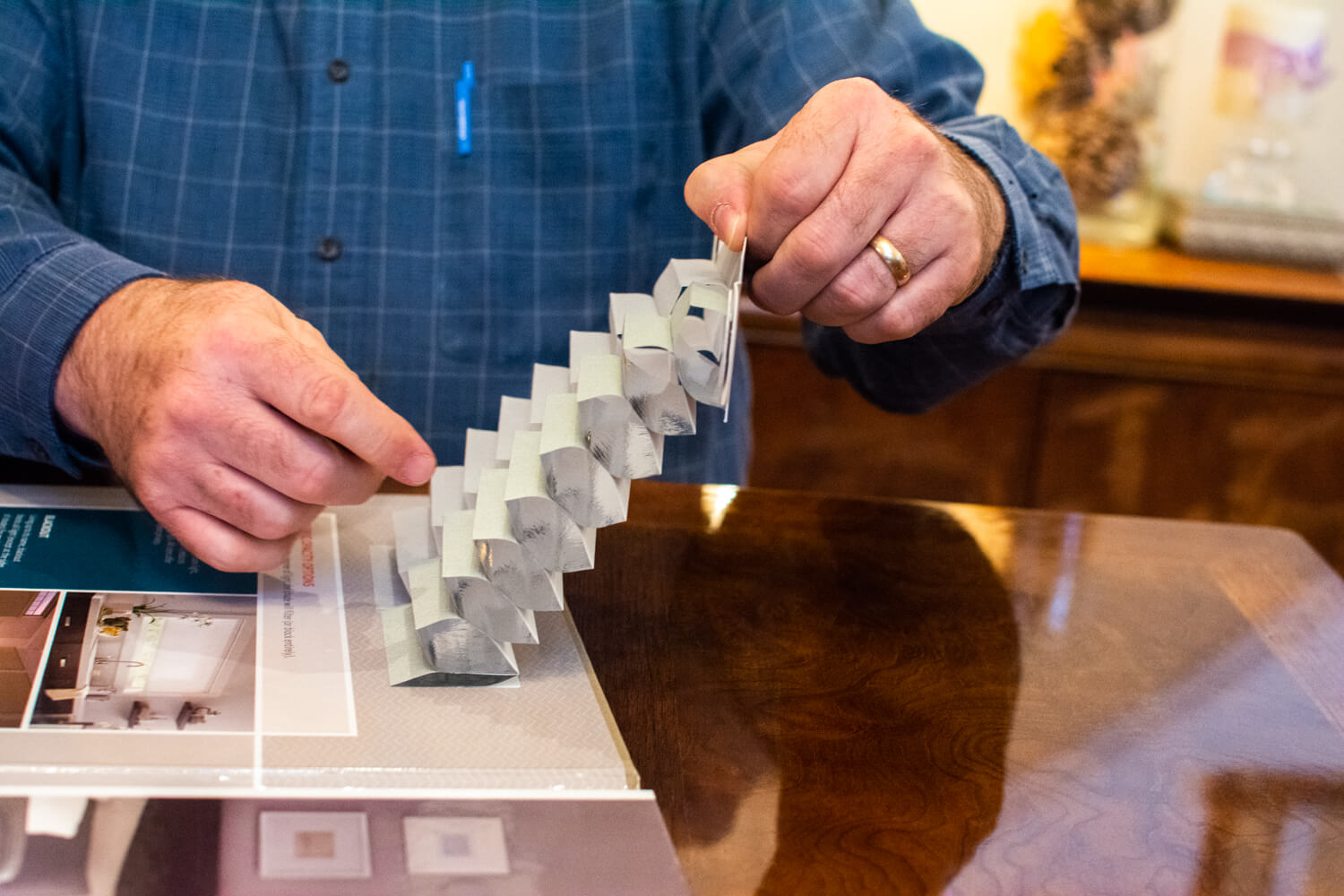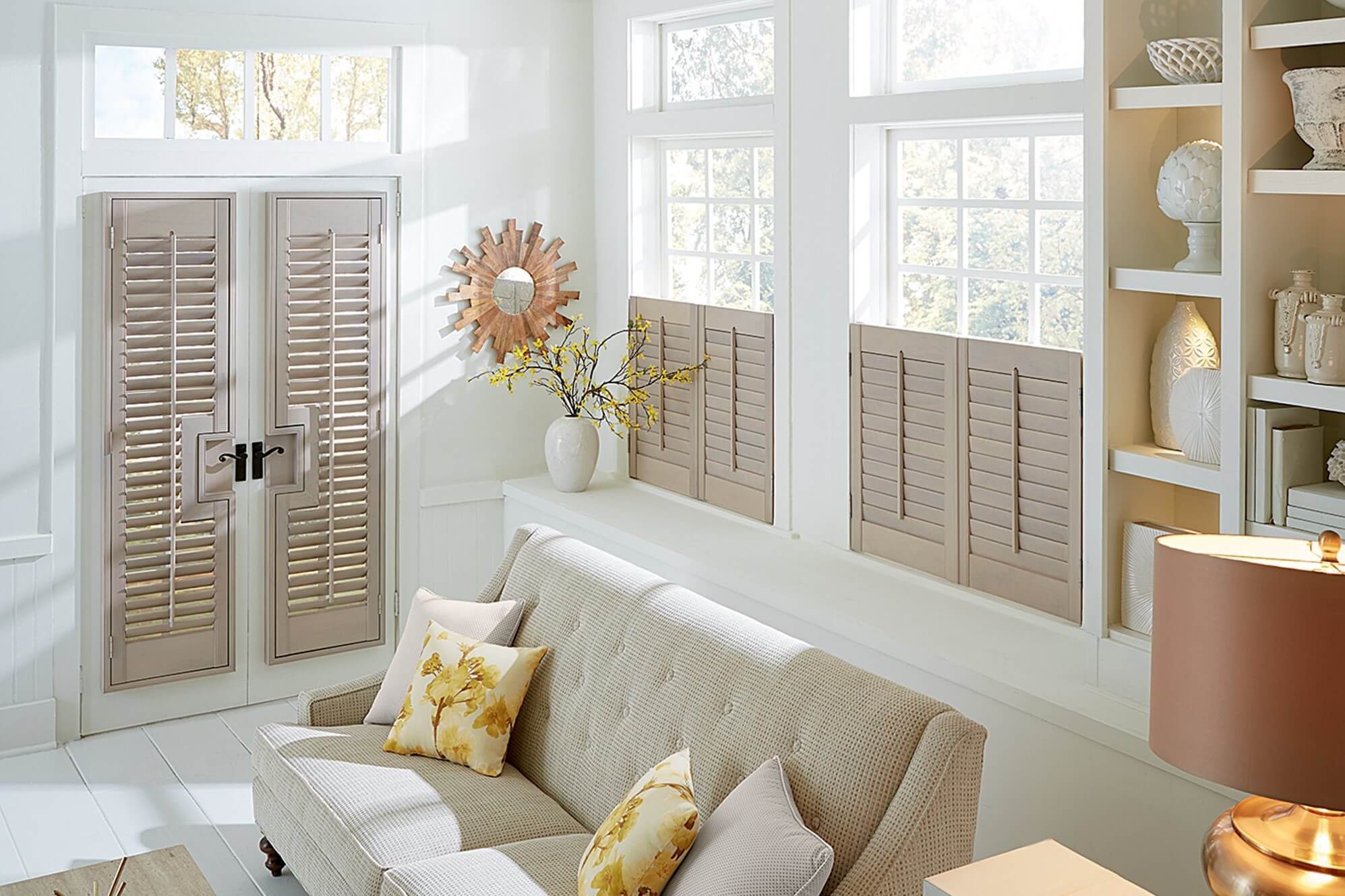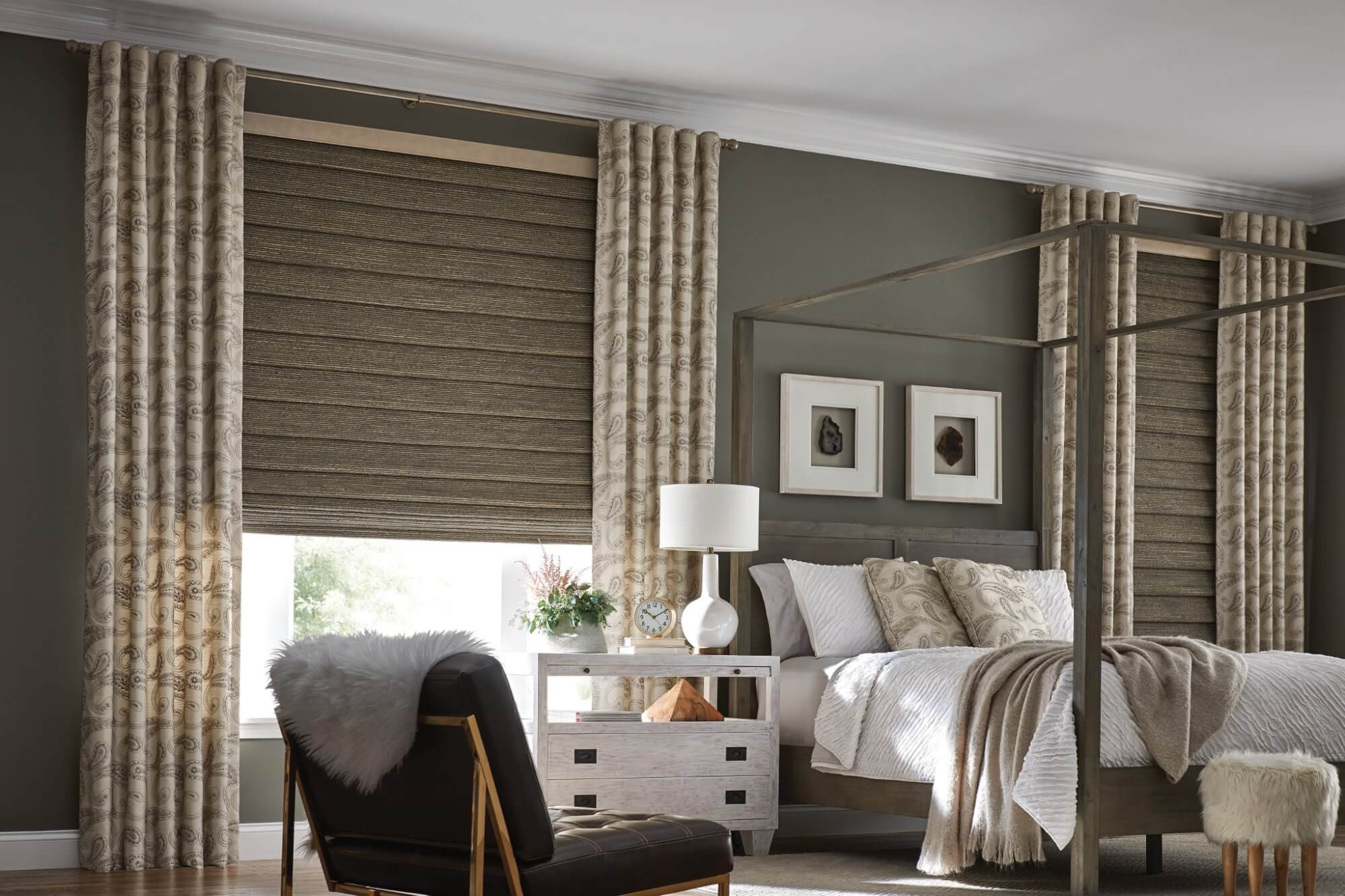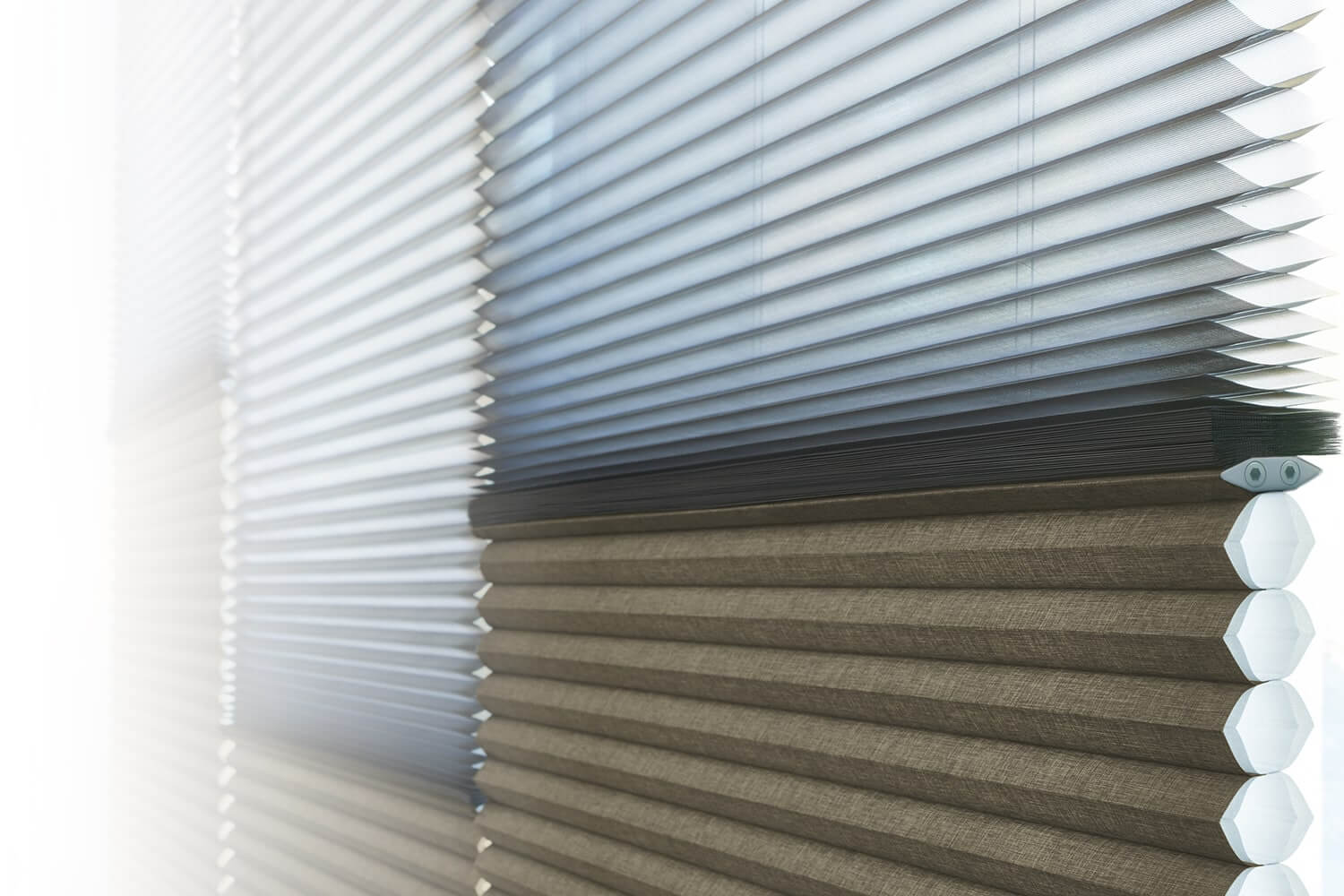Energy-Efficient Window Treatment Options
Which window treatments are the most Energy-Efficient?
Several window treatments can enhance energy efficiency by providing insulation and reducing heat transfer. Here are some of the most energy-efficient options:
Cellular Shades (Honeycomb Shades): Cellular shades feature a unique honeycomb structure that traps air between the window and the room, providing an insulating barrier. This helps to prevent heat loss during the winter and heat gain during the summer, reducing the need for heating and cooling.
Insulated Curtains or Drapes: Insulated curtains or drapes feature multiple layers of fabric, including a thermal lining, to provide insulation against drafts and temperature fluctuations. They can help to keep your home warmer in the winter and cooler in the summer, reducing energy consumption.
Exterior Shades or Blinds: Installing shades or blinds on the exterior of your windows can help block sunlight before it enters your home, reducing heat gain during the summer months. Exterior shading solutions can be particularly effective in areas with intense sunlight.
Window Film: Low-emissivity (low-e) window film can be applied to existing windows to improve energy efficiency. This film helps to reflect infrared heat while allowing visible light to pass through, reducing heat transfer and glare.
Shutters: Interior or exterior shutters can provide insulation by creating a barrier between the window and the room. Wooden shutters, in particular, offer natural insulation properties and can help to regulate temperature and airflow.
Roman Shades with Thermal Lining: Roman shades with a thermal lining provide both style and energy efficiency. The added thermal layer helps to block drafts and reduce heat loss or gain, making them a practical choice for energy-conscious homeowners.
When selecting window treatments for energy efficiency, consider factors such as your climate, window orientation, and budget. Additionally, proper installation and sealing of windows are essential to maximize energy savings.
Upgrade your home's energy efficiency and enhance comfort with our selection of energy-saving window treatments. Contact our team now or find a location near you to find the best option for you!
Windows accounts for nearly 50% of all heat loss or gain within a typical house. That means that 50% of the work that your heating and cooling systems do is to compensate for the energy lost through your windows. There are three factors controlling the amount of energy lost through windows – the material of the windows, the number and size of the windows, and the window coverings.
Energy Loss Factor 1 - Window Material
The type of glass and construction of the window itself will determine how much energy is transferred through the window. Dual-pane windows, as the name suggests, have a second pane of glass and provide more insulation than single-pane windows. Low–e glass, which stands for low emissions, provides greater insulation than traditional windows and is another popular, energy-efficient choice. By adding multiple panes of glass or low-e coating to windows, air is trapped between the panes providing a pocket that prevents the transfer of energy from inside to outside.
Energy Loss Factor 2 - Size And Number Of Windows
The number of windows and the size of each window will also determine how much energy is lost. Energy loss is directly proportional to the surface area of the windows. Even with the most energy-efficient windows available, a wall covered with floor-to-ceiling windows is going to have a higher rate of energy loss than a wall that contains only one or two smaller windows.
Energy Loss Factor 3 - Window Coverings
Finally, the type of window coverings that are installed on each window will play a huge factor in how much energy is lost. Window treatments with greater insulation will prevent energy loss when properly utilized. Adding energy-efficient window coverings will reduce how much energy is lost through your windows.
Typically, it is less expensive to upgrade the window coverings in your home than it is to replace the windows. Adding energy-efficient window treatments is a great way to improve your home’s energy efficiency without the invasive ordeal of installing new windows. Not only will they boost your home’s energy efficiency, but they will also enhance the style and decor of your home.
Our design experts know the value that can come from finding the perfect balance of style and function for every window treatment. When it comes to assessing the needs of each home, energy efficiency is one of the many factors they take into consideration when selecting window treatments.
R-VALUE
What is the R-value? R-value is a term used in building and construction to refer to how well a barrier resists the flow of heat. The higher the R-value, the greater the insulating property of that material.
R-values are assigned to all types of building materials including walls, ceilings, insulation, windows, and window coverings. Knowing the R-value of different materials allows you to compare the energy efficiency of those materials. It is important to note that the R-value that is assigned to window coverings represents the amount of insulation provided when the window coverings are being used in their closed positions.
Knowing the R-value of different types of window coverings will tell you how efficient those window coverings are at preventing heat loss. Preventing heat loss during the winter means your heating system doesn’t have to work as hard to keep your home at a comfortable temperature. This in turn will decrease your energy bills and save you money.
Different types of window coverings will have different ranges of R-values. It is important to keep in mind that the actual R-value of each window covering will be determined primarily by the material and is measured when the treatment is being used in its closed position.
TYPES OF ENERGY-EFFICIENT WINDOW COVERINGS
Cellular Shades

Cellular shades are also known as honeycomb shades due to the hexagonal-shaped pattern within the shade. The unique design allows air to be trapped within these cells creating insulation between the layers.
These shades are typically the most energy-efficient window coverings available. They have an R-value that ranges from 3.25 to 6.0. Compare that to typical horizontal blinds which have an average R-value of 2.5 and their insulation properties really stand out.
Cellular shades come in a wide variety of pleat sizes, colors, fabrics, textures, and patterns. Again, the actual R-value of the cellular shade will be determined by the material of the shade. The versatility of these shades, along with their energy efficiency, makes these shades some of the most popular choices available on the market today.
Shutters

Shutters are another excellent choice for keeping your home’s heat inside. Shutters tend to have fewer gaps because they are usually installed directly to the window frame. When the shutters are closed, they provide an air space barrier between the shutter and the window which decreases the amount of heat lost.
The material of the shutters will determine their energy efficiency. Shutters made from vinyl typically have a higher R-value than wood shutters. We discuss the differences of surface style in greater detail in our blog all about shutters.
Shutters are always a great choice because they not only add excellent insulation, but also increase the amount of light control, privacy, and aesthetics of the room, adding to the overall value of your home.
Fabric Treatments

Just like an extra layer helps keep you warmer in the winter, fabric treatments add another layer to your windows. On their own, drapes and curtains can help to prevent heat loss. When closed, these fabric treatments provide a layer of insulation between the window and the room.
Fabric treatments are a wonderful addition to other window treatments like blinds or shades. Not only do they provide an added design element to your room, but they will also add a double layer of insulation to your windows. When draperies are added to your windows, they can decrease the amount of heat lost up to 10%.
Drapes with linings can prevent even more heat loss by adding an extra layer behind the drapes. Thermal linings on drapes will increase insulation and can dampen noise as well. In addition to lined drapes, consider interlining drapes. Interlining adds a layer between the lining and the front face of the drapes. A study was done that showed that when drapes were interlined, the R-value was significantly increased.
By adding fabric treatments to your windows, you not only add to the decor, but you will also greatly increase the energy efficiency of your windows.
Solar Shades and Window Film

Solar shades and window film are specifically designed to prevent heat gain and reduce glare while not fully obstructing the view from your windows.
Solar shades are roller shades that are mounted to a frame within the window. They come in various degrees of openness. Solar shades are best at keeping harmful UV rays out when they are lowered but depending on the openness of the material, they will not inhibit your view.
Window film adheres directly to the glass of your windows to prevent the amount of heat that passes through the glass. Window film comes in a range of tints so as not to obstruct the view from the window. There is no additional hardware required since the film attaches to the glass itself. Since there is no raising or lowering capabilities to this type of window covering, the windows are always protected. Window film is like putting a pair of sunglasses on your windows - it reduces the glare making it more comfortable to see through the glass.
Solar shades and window film are popular choices for protecting rooms from UV rays, heat gain, and glare. If you are looking for a protective window treatment that does not obstruct the view, then solar shades or window film would be a great option to consider.
CONCLUSION
Window treatments are a great way to keep your home’s heat inside right where you want it. They are typically more affordable to upgrade than windows and will add a decorative touch to your home. By combining the function and versatility of various window treatments, your home will be more energy efficient which will end up saving you money on your monthly utility bills.
For more information on what types of window coverings the Department of Energy recommends as the most energy-efficient, visit https://www.energy.gov/energysaver/energy-efficient-window-attachments.

When looking to upgrade your window treatments, be sure to take into account the energy efficiency of the coverings you are considering. Your window coverings should not just be a part of your interior décor, but should also keep your home warm in the winter and cool in the summer. By combining style with functionality, you will end up saving yourself money each month.
If your home improvements this winter include updating your window treatments to improve your home’s energy efficiency, be sure to reach out to us at (888) 650-6187 or schedule a free design consultation.
 About the Author: Brooke Carr, Gotcha Covered
About the Author: Brooke Carr, Gotcha Covered
Brooke joined the Gotcha Covered family in 2018 as the Social Media Coordinator. She works closely with our corporate teams and our Gotcha Covered franchisees to develop insightful and helpful content for our brand.





